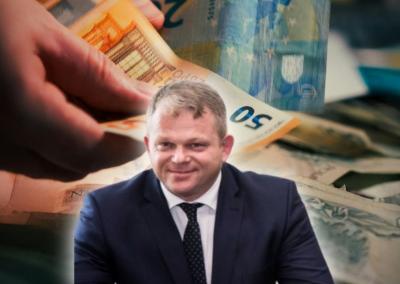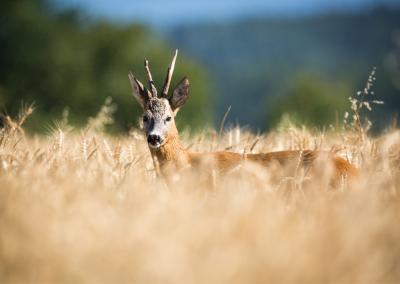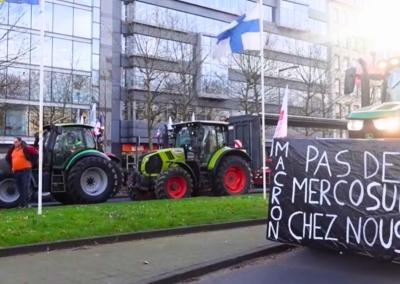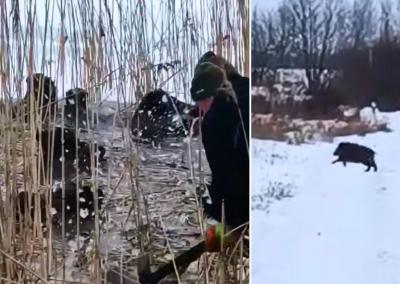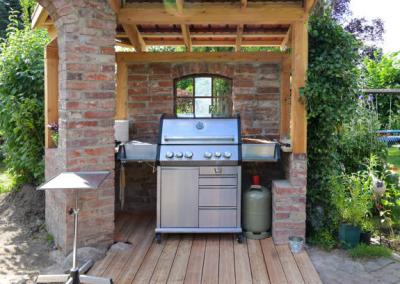How to equip a wine cellar
Wine cellars are no longer exotic or luxurious, and they are not so rare in private houses. Nowadays, many people are setting them up, and this tradition is becoming more common in areas famous for their wines or on farms that produce wine. Some use wine cellars to attract buyers and tourists. On the other hand, it is also possible to create a wine cellar at home for purely personal purposes.
So, setting up a wine cellar can take a lot of effort and time. It is very important to choose the right location for the cellar, to regulate the temperature and ventilation, to ensure and maintain a constant microclimate, and several other conditions. The space will also need the right finishes and special furniture for wine bottles.
Choices for a wine cellar
Traditionally, wine stocks should be stored underground. This is true, as it has the best microclimate and no direct sunlight, which can have a negative effect on wine.
That is why it is best to locate wine storage in the cellar of the house. However, this idea will only be possible if the house has a cellar of any kind. Basements are usually included in the design before construction. It is very problematic to create cellars later, once the house itself has been built.
Before constructing a cellar, it is important to take into account certain features. Soil analysis and testing are necessary. If the groundwater level is high, then without special drainage and other systems, the wine cellar is at risk of constant flooding and excessive humidity.
Wine cellars should not be located under kitchens and boiler rooms. In such cases, you will certainly not avoid temperature differences that will adversely affect the wine stored in the cellar.
The cellar area shall be calculated at the design stage. It is important to know in advance exactly how much wine will be stored there. The minimum area is usually 10 square metres and the maximum area for a private house is 25 square metres. This space can accommodate around 3,000 bottles of wine.
But a wine storage room can be set up in more than just a cellar. For example, if the house does not have a cellar, then wine storage can be organised in one of the rooms, adjusting the microclimate there and styling the room as a classic wine cellar. But remember that vibrations are not allowed in the wine storage room. Therefore, a washing machine must not be placed in the vicinity of the wine. The constant vibration will stir up the sediment in the bottles, causing the wine to lose its good qualities.
In addition, if possible, the wine cellar can be located in the atrium of the house or under an extension. Finally, if neither of these options is suitable, the cellar is built on a site close to the house, away from water sources and as high as possible from groundwater. With the necessary skills, it is possible to build a wine cellar on your own according to drawings. In this case, it is best to choose a site on a small hill.
Temperature in a wine cellar
It is essential to store wine correctly, especially if you age it for several years. It is important to maintain a certain temperature to prevent spoilage during the process. It should be borne in mind that the temperature will depend on the wine itself. For example, white wines are stored at 6-12 degrees. Red wines are kept at 12-18 degrees. Champagne requires a minimum temperature of between 2 and 6 degrees.
It is important to bear in mind that temperature changes have a very negative effect on wines. For example, if a red wine is stored in a cellar and the temperature drops below +10 degrees, it will mature much more slowly. When the temperature in the cellar rises to +19 degrees or more, the corks will start to deform. This will allow air to enter the bottles, which will cause the wine to spoil naturally.
A good modern option is wine cabinets with automatic temperature settings.
Humidity in the wine cellar
The optimum humidity in a wine cellar should be between 70% and 75% (60% is sometimes allowed). Lower humidity levels will make the air too dry for storage, which will also lead to deformation of the corks and air getting into the wine bottles. At humidity levels above 75-80%, the bottles can start to mould, as can everything else in the cellar.
In order to control humidity and temperature in a wine cellar, it is often not possible to do without special equipment to maintain the microclimate. This can be portable or stationary. A stationary system must be installed during the construction of the house. An air supply-exhaust system can be installed. This is what allows the air to circulate freely and keeps the humidity within normal limits.
The basement should not receive the slightest sunlight. No windows should be allowed to let the sun in. This point must be particularly important for those designing wine cellars in ordinary rooms. The ultraviolet rays of the sun's rays quickly spoil the wine. Light in the cellar should only be artificial and dim. But incandescent light bulbs are forbidden because they heat the air. Use the more modern energy-saving bulbs, which do not heat up.
Wine cellar floor
In the past, wine cellar floors were made of clay. The clay floor was sprinkled with sand on top so that the space could be kept at an optimum humidity level. Some people still do this today. Nowadays, there are other options for wine cellar flooring: planks, ceramic tiles.
When the water table is high, it is advisable to make the floor concrete and finish it with another material on top for a more acceptable aesthetic.
When the basement is very wet and it is difficult to reduce the humidity, it is possible to sprinkle the floor with sand or fine gravel as in the old days. This will allow water droplets that form on the ceiling and drip downwards to penetrate the sand layer and prevent puddles from forming on the floor.
Wine cellar walls
This is one of the most important points when setting up a private wine cellar. The materials used to finish the walls must meet several criteria: durability, reliability, environmental friendliness. In addition, it is essential that the wall material is odourless. For example, resinous pine is not suitable for wine cellar decoration. The smell of pine resin may be pleasant to some people, but it is unlikely that you will want the wine to smell the same. Bottle corks are good at absorbing odours and will make the wine taste strange. This is also why vegetables should not be stored in wine cellars.
The walls of a wine cellar are usually finished with bricks, decorative ceramic tiles, marble or limestone. Wood can also be used, the best option being oak. It has been used to line the walls of wine cellars since ancient times. It is important to remember that wood must be treated with an antiseptic. Otherwise, it may start to mould.
It is not only important to clad the walls of a wine cellar, but also to insulate and insulate them. The insulation layer must be as thick as possible – at least 15 cm. Foam or expanded polystyrene panels are commonly used for thermal insulation.
The wine cellar door must be as tight as possible. If possible, make the door as small as possible (just enough to allow you to walk in without banging your head on the lintel). Smaller doors that close tightly maintain a more stable temperature in the cellar.
Wine shelves
Shelves and racks for wine bottles are a classic component of a wine cellar. Wine racks are usually made of wood, impregnated with antiseptics and waxed. Such wood is free from rotting due to moisture and fungi. But there are other options – e.g. made of metal or stone.
Each shelf has compartments for wine bottles. The compartments are square as standard, but models with hexagonal compartments can be ordered for particularly expensive wines. All shelves must have safety edges to prevent bottles from falling out.



